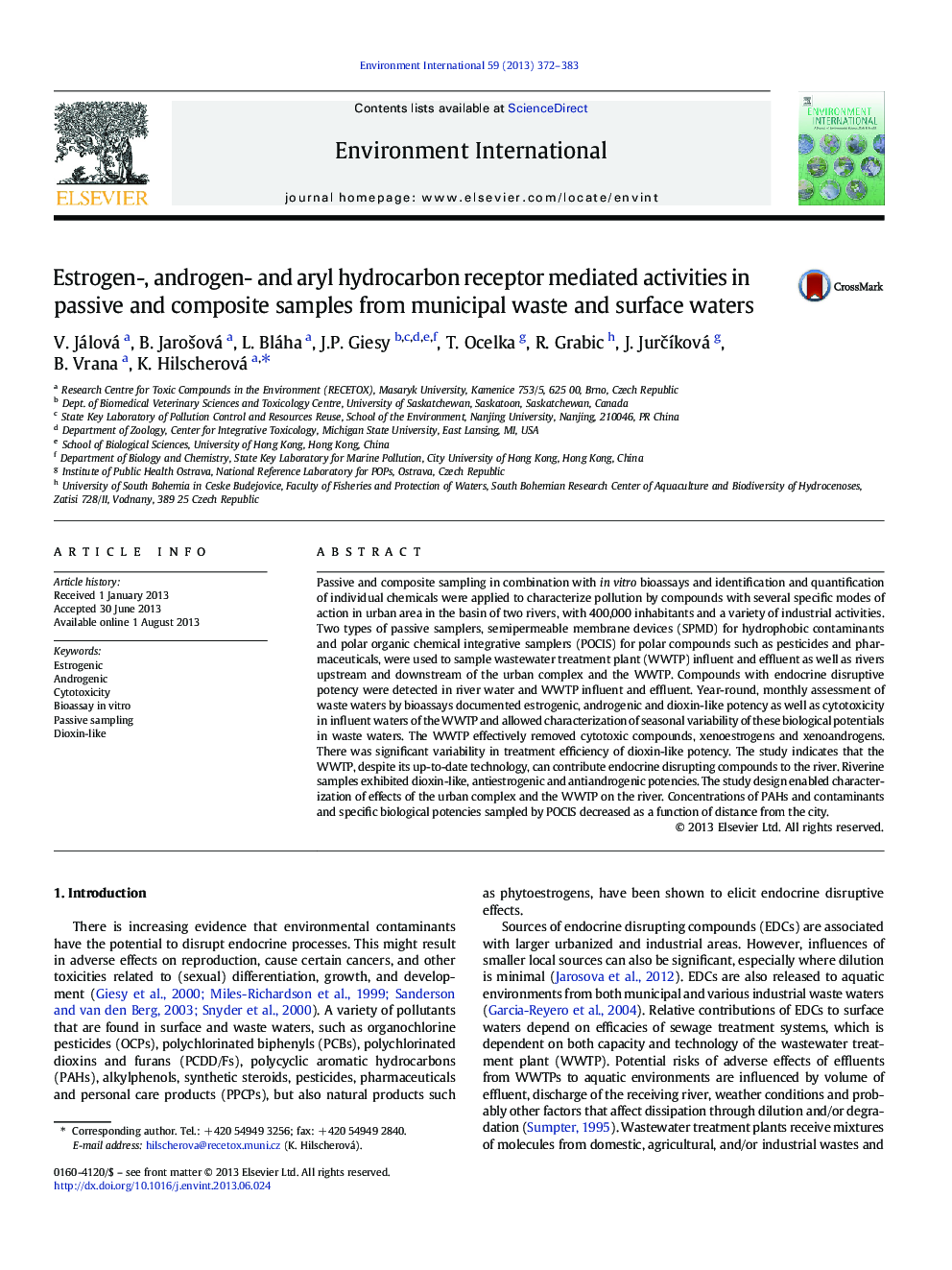| Article ID | Journal | Published Year | Pages | File Type |
|---|---|---|---|---|
| 6314314 | Environment International | 2013 | 12 Pages |
Abstract
Passive and composite sampling in combination with in vitro bioassays and identification and quantification of individual chemicals were applied to characterize pollution by compounds with several specific modes of action in urban area in the basin of two rivers, with 400,000 inhabitants and a variety of industrial activities. Two types of passive samplers, semipermeable membrane devices (SPMD) for hydrophobic contaminants and polar organic chemical integrative samplers (POCIS) for polar compounds such as pesticides and pharmaceuticals, were used to sample wastewater treatment plant (WWTP) influent and effluent as well as rivers upstream and downstream of the urban complex and the WWTP. Compounds with endocrine disruptive potency were detected in river water and WWTP influent and effluent. Year-round, monthly assessment of waste waters by bioassays documented estrogenic, androgenic and dioxin-like potency as well as cytotoxicity in influent waters of the WWTP and allowed characterization of seasonal variability of these biological potentials in waste waters. The WWTP effectively removed cytotoxic compounds, xenoestrogens and xenoandrogens. There was significant variability in treatment efficiency of dioxin-like potency. The study indicates that the WWTP, despite its up-to-date technology, can contribute endocrine disrupting compounds to the river. Riverine samples exhibited dioxin-like, antiestrogenic and antiandrogenic potencies. The study design enabled characterization of effects of the urban complex and the WWTP on the river. Concentrations of PAHs and contaminants and specific biological potencies sampled by POCIS decreased as a function of distance from the city.
Related Topics
Life Sciences
Environmental Science
Environmental Chemistry
Authors
V. Jálová, B. JaroÅ¡ová, L. Bláha, J.P. Giesy, T. Ocelka, R. Grabic, J. JurÄÃková, B. Vrana, K. Hilscherová,
